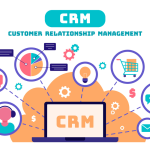CRM Data Migration Best Practices: Seamless transition to a new platform
In a dynamic landscape where businesses often find themselves in the need to migrate data from one platform to another, CRM is a critical process that requires careful planning and execution. A seamless transition is crucial for maintaining business continuity and helps preserve valuable customer information.

CRM Data Migration Steps
Some of the best practices that can be considered for ensuring a smooth CRM data migration are as follows
- Planning and Assessment
The first and foremost point to consider is to identify the data that needs to be migrated, which includes customer data, sales history, and configurations. It is also essential to understand the scope and complexity of the migration to create a detailed plan and timeline.
- Choosing the Right Migration Method
Various methods are available like manual entry, import/export, and automated migration tools. Selecting the method that suits the requirements according to the volume of the data, complexity, and requirement.
- Data Mapping and Transformation
Mapping out the fields and the different types of data structures helps ensure that the CRM systems achieve compatibility and consistency regarding data. It also helps maintain the integrity of the data in the migration process.
- Testing and Validation
Performing testing at each step of the migration process to identify and resolve issues. Ensuring the accuracy and completeness of the migrated data by validating it against the original data.
- Backup and Rollback Plans
It is necessary to have a backup plan in case of an unforeseen issue like data loss during the process of migration. That is why it is necessary to have rollback plans just to be on the safe side. Apart from this regularly backing up data is also an important step that can help in situations like loss of data or the data getting corrupted.
- Post-Migration Support
Continuously monitoring the performance of the new CRM system and optimizing the configurations as per the needs to improve efficiency and user satisfaction.
Conclusion
By following these steps, businesses can ensure a seamless transition to a new CRM platform while preserving data integrity, minimizing disruptions, and maximizing the value of their customer relationships. Effective CRM data migrations are not just about moving your data from one system to another, it is about the requirements that the customer is expecting from us in terms of things like customer engagement and achieving long-term success.








